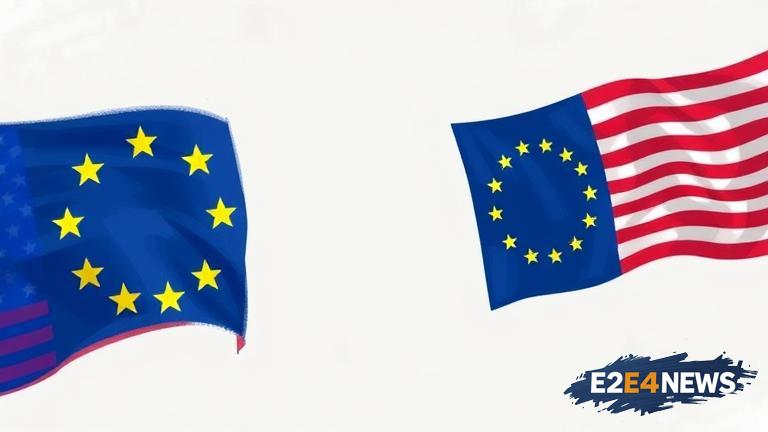The European Union and the United States have been engaged in intense negotiations to finalize a tariff agreement, which is expected to have far-reaching implications for global trade. The agreement aims to reduce tariffs on a wide range of products, including industrial goods, agricultural products, and services. This development is seen as a major breakthrough in the trade relations between the two economic powerhouses. The EU and US have been working tirelessly to iron out their differences and find common ground on key issues. The agreement is expected to boost trade between the two regions, creating new opportunities for businesses and consumers alike. The reduction in tariffs will make EU products more competitive in the US market, while also increasing American exports to the EU. The agreement will also provide a significant boost to the global economy, which has been facing challenges in recent years. The EU and US are among the world’s largest trading partners, and their agreement is expected to have a positive impact on the global trade landscape. The negotiations have been complex and challenging, with both sides having to make concessions to reach a mutually beneficial agreement. However, the end result is expected to be a win-win for both parties, with increased trade and investment flowing between the two regions. The agreement is also seen as a significant step forward in the EU’s efforts to strengthen its trade relationships with key partners. The EU has been actively pursuing trade agreements with other regions, including the Asia-Pacific and Latin America. The US, on the other hand, has been focused on renegotiating existing trade agreements, including the North American Free Trade Agreement (NAFTA). The EU-US tariff agreement is expected to be a major milestone in the history of trade relations between the two regions. The agreement will provide a framework for future trade negotiations and cooperation between the EU and US. It will also serve as a model for other trade agreements, demonstrating the benefits of cooperation and mutual understanding. The EU and US have a long history of trade cooperation, dating back to the post-World War II era. The two regions have a strong economic relationship, with the EU being the US’s largest trading partner. The US is also one of the EU’s largest trading partners, with bilateral trade totaling over $1 trillion annually. The agreement is expected to further strengthen this relationship, creating new opportunities for businesses and consumers. The reduction in tariffs will make it easier for companies to export goods and services, creating new jobs and stimulating economic growth. The agreement will also provide a boost to small and medium-sized enterprises (SMEs), which are often disproportionately affected by tariffs. The EU and US have also agreed to work together to address common challenges, including climate change and trade facilitation. The agreement is expected to be finalized in the coming weeks, with both sides working to complete the technical details. Once finalized, the agreement will be a major achievement for the EU and US, demonstrating their commitment to cooperation and mutual understanding. The agreement will also serve as a model for other trade agreements, showing that cooperation and compromise can lead to mutually beneficial outcomes. In conclusion, the EU-US tariff agreement is a significant development in the history of trade relations between the two regions. The agreement is expected to have far-reaching implications for global trade, creating new opportunities for businesses and consumers alike. The reduction in tariffs will make EU products more competitive in the US market, while also increasing American exports to the EU. The agreement will also provide a significant boost to the global economy, which has been facing challenges in recent years.





